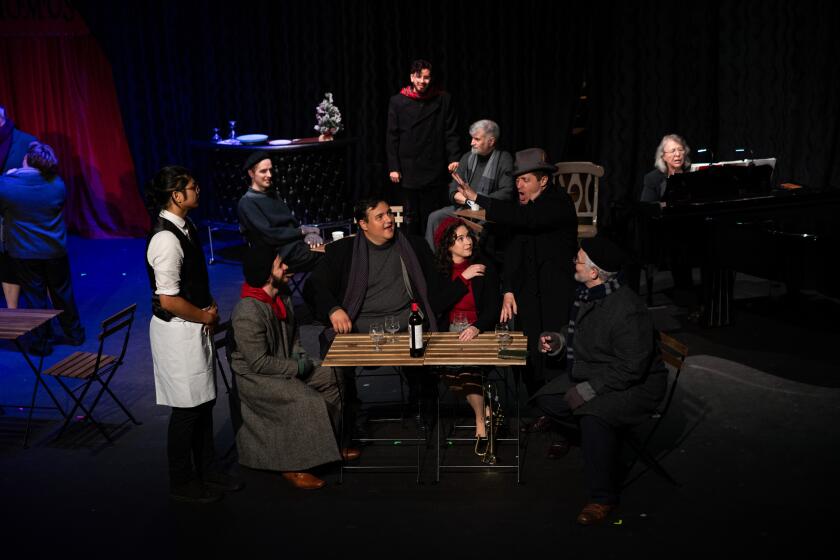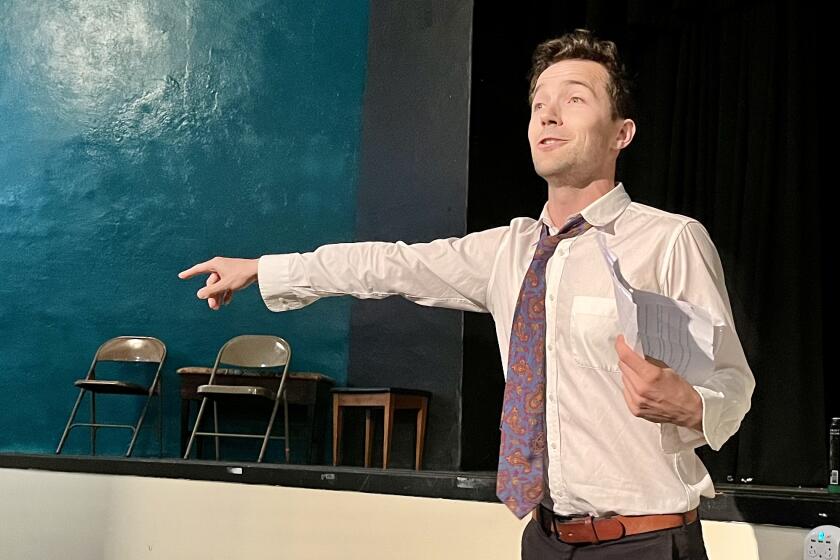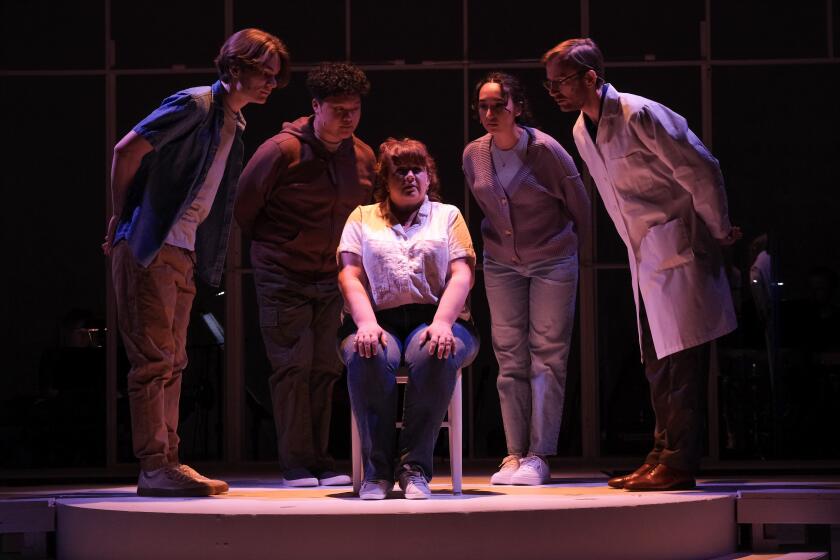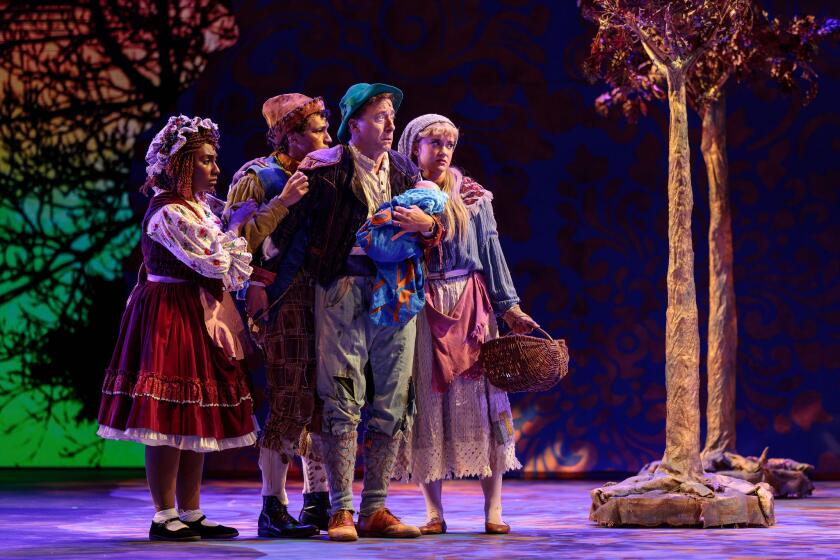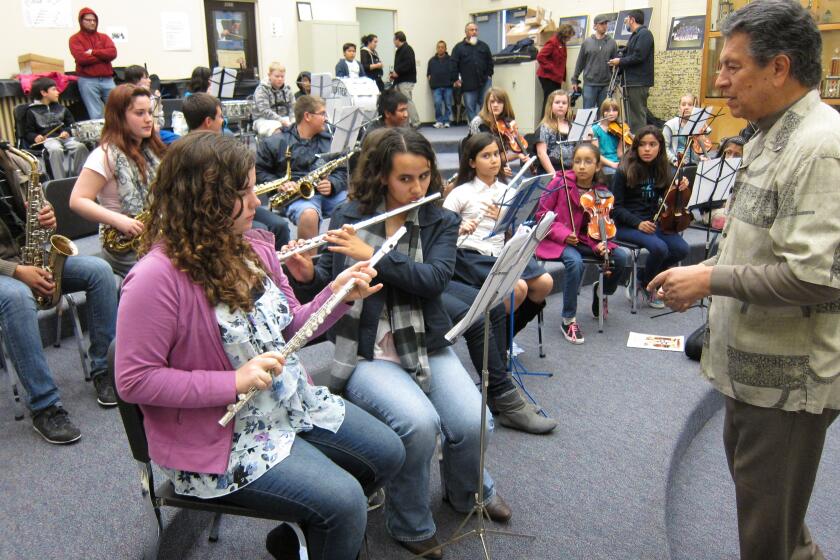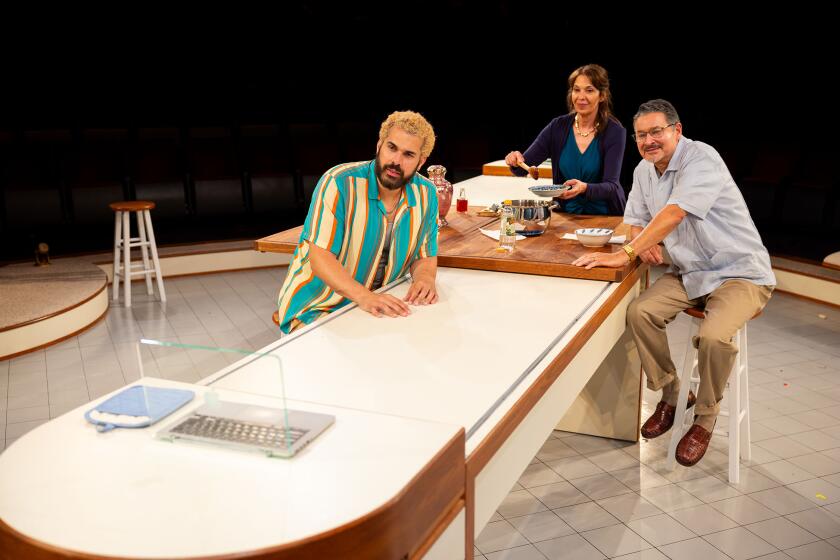Moore brings new dimension to ‘Butterfly’
Soprano astonishes with acting, vocals in lavish San Diego Opera production
Among the handful of operas known as good “starters” for newbies to the art form, “Madama Butterfly” ranks high on the list. The music is gorgeous with hummable themes, the story is both exotic and relatable, and it’s not much longer than the latest “Star Wars” movie.
But for opera veterans, the Giacomo Puccini warhorse — produced nine times by San Diego Opera since 1971 — rarely delivers anything new.
Until now.
In her astonishing title performance in the company’s latest production, which opened Saturday at the San Diego Civic Theatre, Latonia Moore humanizes the character in a way I’ve never seen.
“Madama Butterfly”
When: 7 p.m. April 19 and 22. 2 p.m. April 24
Where: San Diego Opera at the San Diego Civic Theatre, 1100 Third Ave., downtown
Tickets: $35 and up
Phone: (619) 533-7000
Online: sdopera.com
Moore’s rich, supple and multi-octave soprano voice has none of the brittle edges often heard from others in the difficult-to-sing role, and neither does her portrayal of Cio-Cio-San, the love-struck geisha who gives up everything for a visiting American ship captain in turn-of-the-century Japan.
Cio-Cio-San, whose name means Butterfly in Japanese, is only 15 when she marries the callous girl-in-every-port sailor B.F. Pinkerton. As a result, Moore gives her character a childlike exuberance on her wedding day, an impetuous tendency to preen at landing an American husband, the stubborn teen nature that refuses to give up when he sails into the sunset, and the near-madness that leads her to smile adoringly during his final betrayal.
Moore is also a gifted vocal interpreter. She’s got the power to deliver all the ringing top notes, but she doesn’t over-sing, especially in her character’s heartbreaking signature aria “Un Bel Di,” where she confidently predicts that one day Pinkerton will return.
In his company debut, Romanian tenor Teodor Ilincai has the unenviable task of playing the heartless cad Pinkerton opposite Moore. Although he was overwhelmed a bit by the orchestra in the opening act, he delivered solidly in the second-act love duet and tenderly in his remorseful final scenes. His acting was believable enough that the audience clapped for his singing but showered him with amused “boos” during his curtain call.
In their company debuts, mezzo-soprano J’nai Bridges plays Butterfly’s faithful servant Suzuki with a wealth of tenderness, sisterly concern and reserve, and baritone Anthony Clark Evans impresses with his vocal power and range as Sharpless, the American consul who disapproves of Pinkerton’s throwaway marriage. Richie Luhta shows remarkable poise as Trouble, Cio-Cio-San’s toddler son.
Director Garnett Bruce, back for his fourth “Butterfly” with the company, embraces Moore’s interpretation of the role and creates lovely stage tableaus. He errs only in allowing Goro, the greedy marriage broker, to be played as broadly as written. Goro seems a quaint stereotype next to Moore’s multidimensional geisha.
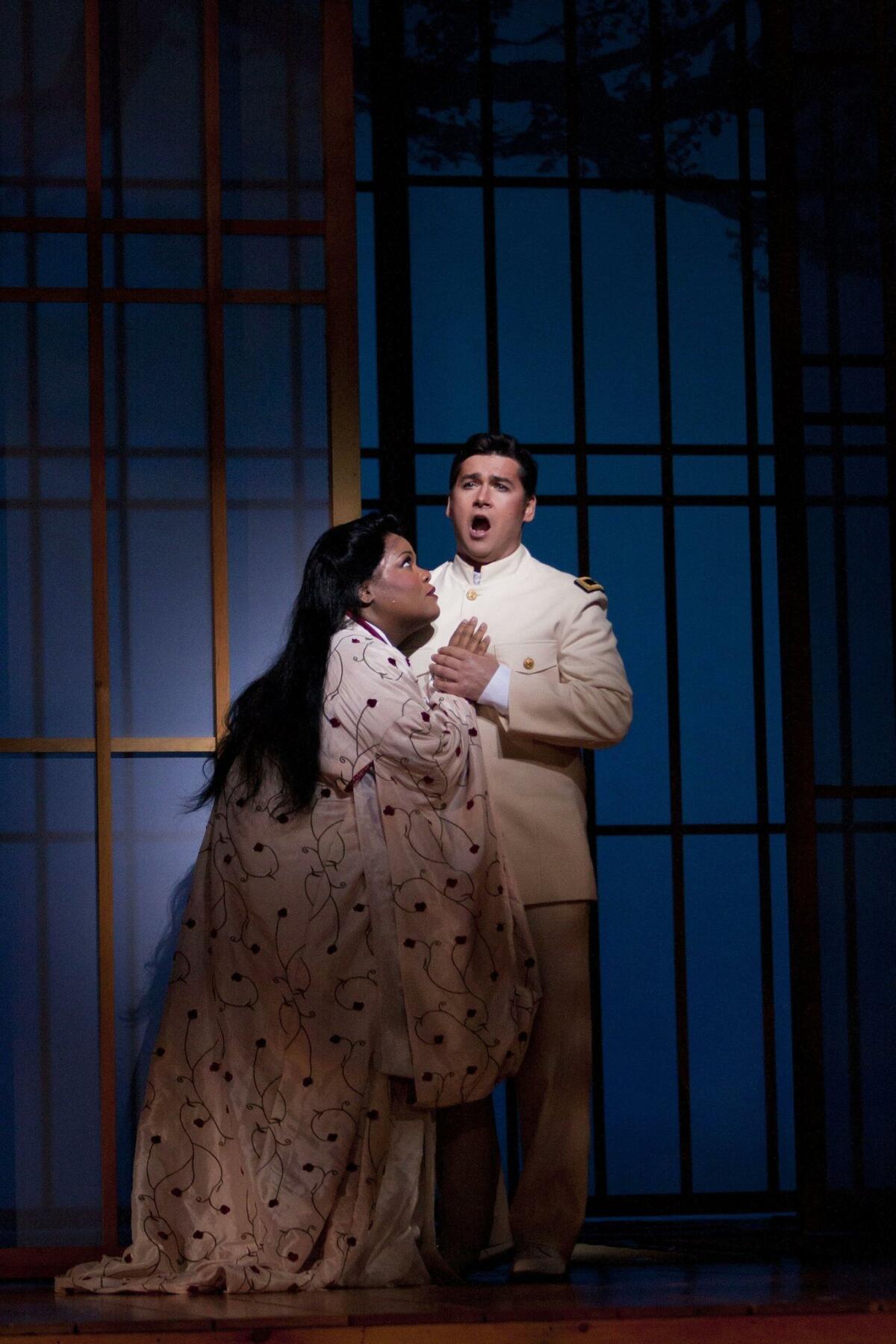
Conductor Yves Abel led the San Diego Symphony through a note-perfect, unhurried performance and fortunately pulled back the musicians to better match the singers voices as the night went on.
Roberto Oswald’s beautiful scenic design, a grand Japanese shoji screen house surrounded by blossoming cherry tree boughs, is a welcome change from the stylized Michael Yeargan set used in the past three productions. And Chris Rynne’s colorful thematic lighting carries Butterfly and the audience through her long and final night of waiting for Pinkerton’s return.
While this “Madama Butterfly” may be the first opera for many San Diegans attending this month, it’s also worth the ticket price for those who’ve seen it many times, because in Moore’s revelatory portrayal, there are many new things to discover.
Get U-T Arts & Culture on Thursdays
A San Diego insider’s look at what talented artists are bringing to the stage, screen, galleries and more.
You may occasionally receive promotional content from the San Diego Union-Tribune.

